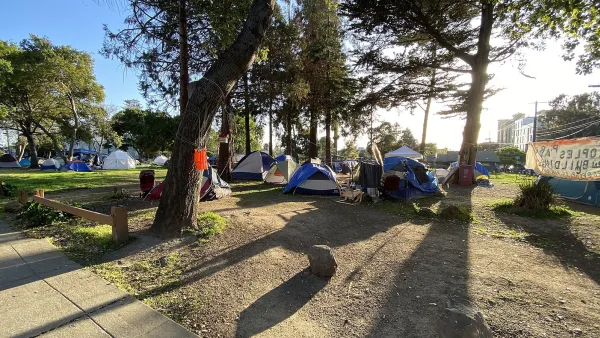The innovative housing program launched during the pandemic has made a significant difference for unhoused individuals, but long-term support remains underfunded.

Carolina Reid summarizes California’s Homekey Program: Unlocking Housing Opportunities for People Experiencing Homelessness, a report from Berkeley's Terner Center for Housing Innovation that assesses the successes and challenges of the innovative housing program. "Developed in the midst of the COVID-19 pandemic, Homekey provides local public entities with large, capital grants that can be used to purchase existing buildings and convert them into housing for people experiencing or at risk of homelessness."
According to the blog, "All told, Homekey 1.0 added 6,000 rooms and/or units to the state’s supply of interim and permanent housing in under six months, at an average initial cost of $238,000 per unit," less than half the average cost of building an affordable housing unit in California.
"We find that Homekey’s grant structure–coupled with giving jurisdictions flexibility in how to use the funds–allowed them to move quickly to respond to local needs." Additionally, "Homekey’s emphasis on speed—facilitated by regulatory streamlining—made all the difference in how quickly localities were able to get people housed."
Reid notes that "For all its strengths, Homekey remains embedded within an underfunded and fragmented affordable housing system. This means that many properties do not have sufficient funding to support long-term operations—this remains the single largest challenge and concern for Homekey grantees." According to the report, "The resources to support resident well-being—including case management, health care, and mental health and/or substance use counseling—also remain well below need."
Reid concludes that the rapid deployment of Homekey shows promise, but the state must continue to support the program with appropriate resources for long-term success.
FULL STORY: California’s Homekey Program: Unlocking Housing Opportunities for People Experiencing Homelessness

National Parks Layoffs Will Cause Communities to Lose Billions
Thousands of essential park workers were laid off this week, just before the busy spring break season.

Retro-silient?: America’s First “Eco-burb,” The Woodlands Turns 50
A master-planned community north of Houston offers lessons on green infrastructure and resilient design, but falls short of its founder’s lofty affordability and walkability goals.

Delivering for America Plan Will Downgrade Mail Service in at Least 49.5 Percent of Zip Codes
Republican and Democrat lawmakers criticize the plan for its disproportionate negative impact on rural communities.

Test News Post 1
This is a summary

Test News Headline 46
Test for the image on the front page.

Balancing Bombs and Butterflies: How the National Guard Protects a Rare Species
The National Guard at Fort Indiantown Gap uses GIS technology and land management strategies to balance military training with conservation efforts, ensuring the survival of the rare eastern regal fritillary butterfly.
Urban Design for Planners 1: Software Tools
This six-course series explores essential urban design concepts using open source software and equips planners with the tools they need to participate fully in the urban design process.
Planning for Universal Design
Learn the tools for implementing Universal Design in planning regulations.
EMC Planning Group, Inc.
Planetizen
Planetizen
Mpact (formerly Rail~Volution)
Great Falls Development Authority, Inc.
HUDs Office of Policy Development and Research
NYU Wagner Graduate School of Public Service





























